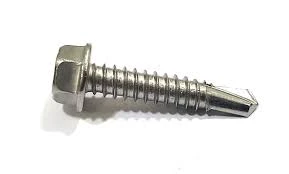Exploring the Benefits of Chemical Anchor Studs in Construction and Engineering Applications
Understanding Chemical Anchor Studs A Comprehensive Guide
Chemical anchor studs have become increasingly popular in construction and engineering applications due to their versatility and strength. These specialized fasteners, often used for anchoring objects to concrete or masonry, provide a reliable solution for various structural needs. This article will delve into what chemical anchor studs are, how they work, their benefits, and best practices for installation.
What are Chemical Anchor Studs?
Chemical anchor studs are a type of anchoring system that employs a two-part adhesive (often made from epoxy or polyester) to bond the stud to a substrate, typically concrete. Unlike traditional mechanical anchors that rely on expansion or friction to secure themselves, chemical anchors use the adhesive properties of the resin to form a strong bond with the surrounding material. This creates a solid connection that is capable of handling substantial loads and stresses.
How Do They Work?
The installation of chemical anchor studs involves a few critical steps. First, a hole is drilled into the concrete or masonry substrate. After cleaning the hole to remove dust and debris, the chemical adhesive is injected into the cavity. Subsequently, the anchor stud is inserted into the hole, ensuring that it is adequately coated with the adhesive. Over time, the chemical reaction within the adhesive cures, creating a bond that is both strong and durable.
Benefits of Chemical Anchor Studs
1. High Load Capacity Chemical anchor studs offer superior load-bearing capabilities compared to traditional mechanical anchors. This makes them ideal for heavy-duty applications, such as securing structural beams, supporting shelving systems, or anchoring machinery.
2. Less Sensitivity to Concrete Conditions Unlike mechanical anchors, which may lose grip in cracked or deteriorating concrete, chemical anchors can still perform effectively in less-than-ideal conditions due to the nature of the adhesive's bonding properties.
chemical anchor studs

4. Corrosion Resistance Many chemical anchors are resistant to corrosion, making them a suitable choice for applications exposed to moisture or harsh environmental conditions.
5. Reduced Installation Time The ease of use and quick-setting adhesives associated with chemical anchor studs can lead to faster installation times compared to traditional anchoring systems.
Best Practices for Installation
To ensure the successful use of chemical anchor studs, follow these guidelines
1. Surface Preparation Properly clean the holes to remove all debris, dust, and moisture to ensure the best adhesion.
2. Adhesive Selection Choose an adhesive that matches the specific requirements of the project, taking into consideration factors like load type, environmental conditions, and substrate characteristics.
3. Curing Time Allow adequate curing time as specified by the adhesive manufacturer before subjecting the anchor to load. This is crucial for achieving maximum bond strength.
4. Follow Manufacturer Guidelines Always refer to the manufacturer's installation guidelines for specific recommendations tailored to the product being used.
In conclusion, chemical anchor studs provide a robust and reliable anchoring solution suitable for various applications. Their high load capacity, adaptability, and ease of installation make them an excellent choice for construction and engineering projects. By following best practices during installation, users can maximize the performance and longevity of chemical anchor studs, ensuring structural integrity for years to come.
-
Weatherproof Plastic Expansion Anchors for OutdoorNewsJun.06,2025
-
Sustainability in the Supply Chain: Eco-Friendly TEK Screws ProductionNewsJun.06,2025
-
Load-Bearing Capacity of External Insulation FixingsNewsJun.06,2025
-
Double Head Bolts: Enhancing Efficiency in Industrial MachineryNewsJun.06,2025
-
Corrosion Resistance in Chipboard Screws: Coatings for Wholesale DurabilityNewsJun.06,2025
-
Butterfly Toggle Bolts : Enhancing Structural ResilienceNewsJun.06,2025
